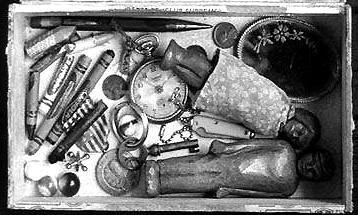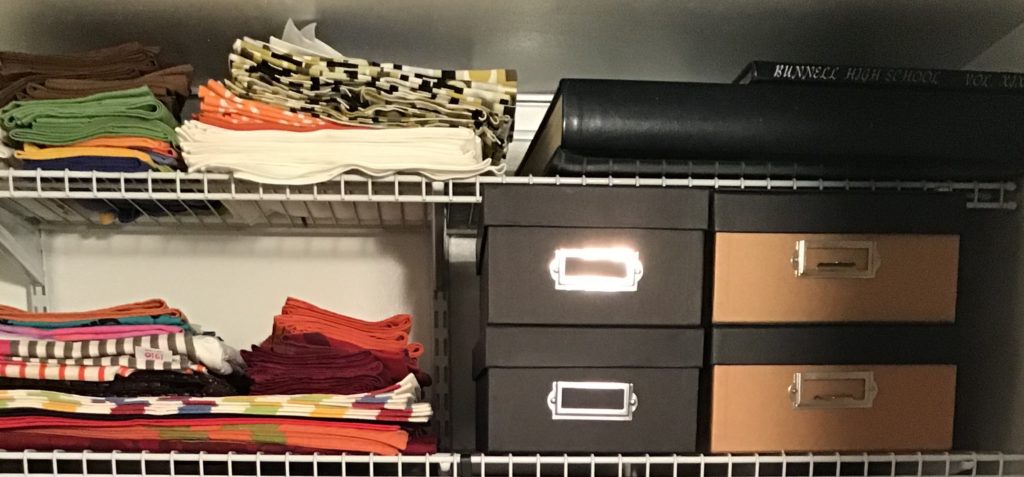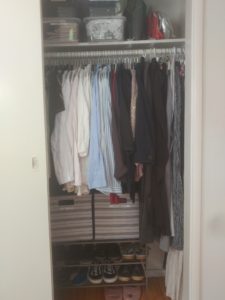It’s called the reverse hanger technique. Here’s how it works:
Turn all your hanging clothing around so each hanger faces towards the back of your closet. As you wear items, return them to face the front of the closet. Now mark your calendar for 6 months from the date you did this. On that day, notice which clothing items are still facing towards the back. These are the ones you haven’t worn!
I recently did this after emptying all my hanging clothes from my closet so my husband could paint it. As I put things back, I noticed right away a few things I didn’t want so they went right into the donation bag. The rest were hung on my favorite space-saving hangers with the hook turned towards me. The last few days I have been putting items back with the hooks turned away from me. I know there will be items that may not get turned around but this gives me confirmation and then I can decide in six months whether it still makes sense to keep them.
Still energized to do more?
- Create a simple plan such as: Sell what I can sell. Give special items to special people I know. Donate the rest.
- Sell high-quality, designer brand clothes online through sites like the RealReal.com or your local consignment shop. Since the pandemic, many have launched online buying and selling sites.
- Donate usable quality clothing to a local thrift shop such as American Cancer Society Discovery Shops or Goodwill. Call to check before you go as some have limited hours during the pandemic.
- Never donate anything that is torn or stained. This is costly for charities to get rid of. These items should be tossed or recycled if possible. Check out the website Earth911.com for fabric recyclers in your area.


 Toys and Childhood Memorabilia
Toys and Childhood Memorabilia



